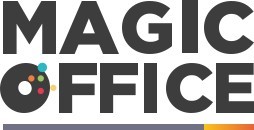
Understanding the Cost Performance Index
Defining the Cost Performance Index
The Cost Performance Index (CPI) is a crucial metric widely utilized in project management to assess a project's financial health. Essentially, CPI provides a quantitative measure that indicates project efficiency by comparing the actual cost of work performed against the budgeted cost of work scheduled. When project managers seek to ensure projects are on a sustainable financial path, the CPI serves as a critical tool. CPI is calculated as the ratio of earned value (EV) to the actual cost (AC), providing a clear performance index:- CPI = EV / AC
The Role of CPI in Project Management
Understanding the Importance of CPI in Project Management
In the realm of project management, the Cost Performance Index (CPI) serves as a critical metric for assessing the financial health of a project. It provides project managers with a quantitative measure of cost efficiency, comparing the budgeted cost of work performed to the actual cost incurred. A CPI greater than one indicates that a project is under budget, while a CPI less than one signals that the project is over budget.
Project managers rely on CPI to make informed decisions about resource allocation, schedule adjustments, and overall project strategy. By analyzing the CPI, managers can identify cost variances early, allowing for timely interventions that can prevent budget overruns. This is particularly important in New Zealand, where companies often face unique challenges that can impact project budgets and timelines.
Integrating CPI with Other Performance Metrics
While CPI is a valuable tool, it is most effective when used in conjunction with other performance metrics such as the Schedule Performance Index (SPI). Together, these indices provide a comprehensive view of a project's progress, highlighting both cost and schedule variances. This dual approach enables project managers to balance cost efficiency with timely project completion, ensuring that projects meet both financial and temporal goals.
For those seeking to enhance their project management skills, obtaining a PMP certification can provide a deeper understanding of how to leverage CPI and SPI effectively. This certification equips managers with the knowledge to interpret performance indices accurately and apply them to real-world scenarios.
To explore further strategies for enhancing financial efficiency in project management, consider embracing a paperless approach to accounts payable as a complementary strategy.
Challenges Faced by New Zealand Companies
Overcoming Financial Management Hurdles in New Zealand
New Zealand companies often face unique challenges when it comes to enhancing financial efficiency through the Cost Performance Index (CPI). Understanding these challenges is crucial for project managers aiming to improve their project management practices and achieve better cost efficiency.
One significant challenge is the accurate tracking of actual costs versus budgeted costs. Many companies struggle with maintaining a precise record of the work performed and the work completed, which can lead to discrepancies in the cost variance. This issue is compounded by the need to align the project budget with the schedule performance (SPI), ensuring that projects remain on track both financially and temporally.
Another hurdle is the integration of CPI with other performance metrics such as the Schedule Performance Index (SPI). Project managers often find it challenging to balance these indices to provide a comprehensive view of project health. This balancing act requires a deep understanding of how earned value and earned actual costs interact, which can be complex without proper training or PMP certification.
Moreover, the dynamic nature of the business environment in New Zealand means that companies must be agile in their financial management strategies. This agility is essential for adapting to changes in project management requirements and ensuring that the cost performance remains optimal. For more insights on enhancing financial flexibility, you might find this article on enhancing efficiency in administrative management processes useful.
In conclusion, while New Zealand companies face several challenges in optimizing their cost performance index, understanding these hurdles is the first step towards overcoming them. By focusing on accurate cost tracking, integrating performance indices, and maintaining agility, project managers can significantly enhance their financial efficiency.
Strategies for Improving CPI
Boosting Cost Efficiency in Projects
To enhance the Cost Performance Index (CPI) in New Zealand companies, a focus on improving various project management strategies is crucial. Addressing budget inefficiencies and ensuring the timely execution of projects can prevent cost overruns and project delays. Here are some practical strategies to boost cost efficiency:- Accurate Budgeting and Cost Estimates: Start by ensuring that your project budget reflects a realistic estimate of the costs involved. Regular reviews and updates based on actual costs can help project managers quickly identify cost variances.
- Implementing Monitoring Tools: Utilizing tools that track cost performance in real time can aid managers in promptly addressing discrepancies. Integrating software solutions that measure CPI and SPI (Schedule Performance Index) can offer insights into cost and schedule efficiency.
- Aligning Schedules with Available Resources: Ensure that project schedules are aligned with available resources, considering both time and budget constraints. This alignment helps in avoiding unnecessary delays and cost overages.
- Regular Performance Audits: Conducting periodic audits of project work performed can identify areas where cost and time efficiencies can be improved. Such audits can highlight issues in work performed and variances from the project budget.
- Training in PMP Certification: Encouraging project managers to pursue PMP certification can equip them with advanced skills in managing projects, including proficiency in handling cost performance parameters.
Case Studies from New Zealand
Examining Real-Life Success Stories in New Zealand
In New Zealand, several companies have successfully leveraged the Cost Performance Index (CPI) to boost their project management efficiency. Through careful monitoring of the cost performance, these companies have managed to stay within project budgets and complete work on schedule, despite the various challenges faced.
One notable example involves a New Zealand firm that undertook a large-scale construction project. The project management team implemented the CPI alongside the Schedule Performance Index (SPI) to track both cost efficiency and schedule adherence. By regularly comparing the actual cost against the budgeted cost, the project managers could quickly identify any variance and take corrective actions accordingly. This proactive approach ensured that the project stayed on track and within budget, ultimately delivering the work performed to the client's satisfaction.
Another success story is from a tech startup that adopted the CPI as part of its PMP (Project Management Professional) certification program. By instilling a culture of continuous improvement and focusing on earned actual value metrics, the startup was able to maintain high levels of cost efficiency across several software development projects. This practice was instrumental in enhancing the company's reputation for timely and budget-compliant project delivery.
Lastly, a dynamic company in the retail industry utilized the CPI to strategically manage their supply chain projects. By ensuring that cost and schedule performance indexes were tightly monitored, they achieved impressive reductions in both cost variance and schedule performance variance. This led to better management of resources and increased satisfaction among stakeholders.
These case studies underline the tangible benefits of employing CPI and SPI as part of comprehensive project management strategies. By effectively managing and optimizing their respective project managers' responsibilities, New Zealand companies can enhance their cost performance and secure a competitive advantage in their respective industries.













